

In the morning Esme and I discussed which place we would pick for a nice walk. After looking at several options, we decided on Coacoatzintla, a small town that is quite close to Xalapa. Before the town, as seen from Banderilla, the road crosses an old lava flow caused by an eruption of "El Volcancillo" (the little volcano). We decided to have a nice walk there, but to the right of the road that goes from Banderilla to Coacoatzintla. About one and a half year ago (see: El Zacatal: The case of the murdered mannequin) we had walked to the left of this road, and we wanted to explore the "other side".
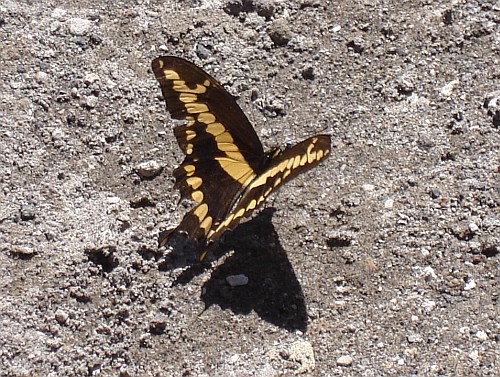
When we arrived in Coacoatzintla we started to walk, roughly going into the direction of the place we wanted to walk. Esme was quite hungry, and when she smelled freshly baked bread, we entered a bakery. Inside it was quite dark, and it smelled really nice. In the back of the bakery a huge wood fire was burning in an oven. In the front, two men were busy making bread on a large table. Esme bought a "concha", a round piece of bread ("pan").
We continued our walk, and after we discovered we had walked into the wrong direction for about one hour (we ended up in the hills), Esme suggested that we should take a taxi back to Coacoatzintla, and then ask the driver to drop us at the place we wanted to start our walk. And so we did.

The taxi driver was asked to stop when we saw pine trees to our left (as seen from Coacoatzintla), and we walked into the forest. The forest floor showed huge pieces of volcanic rock, so we were at the right place. It was quite hot, and we were both happy to walk now and then into the little shadow provided by the pine trees.
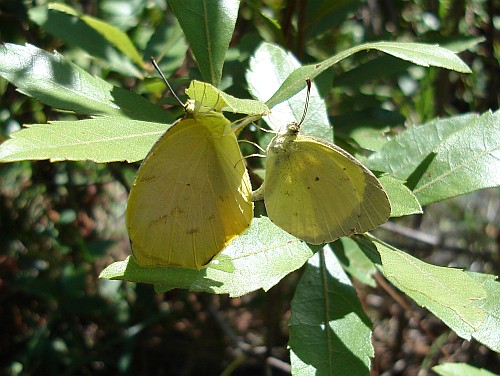
After some walking, and looking under dead pieces of wood for wild life, we ended up at an more open spot. It looked like volcanic rock had been removed by people. We also noticed a big cave-in like there had been a bubble in the hot lava when it flowed, and ages after the flow turned into rock, the "blister" had given in.

We started to follow the edge of the pine forest in front of us into the "right" direction, and suddenly Esme spotted a big lizard sitting on the vertical part of the edge of another cave-in. I tried to get as close as possible with the camera zoomed in to the max, but the resulting photo is quite unsharp. But based on the picture I would say it's a spiny lizard (Sceloporus species).
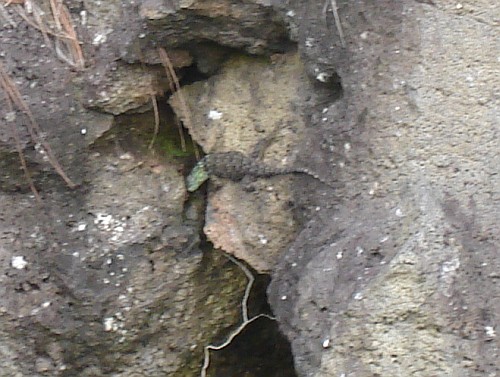
When I got just a little closer the lizard entered the crack in the volcanic rock and was gone from view. We continued our walk, following the edge of a pine forest. I looked under stones, and under one I noticed a small tarantula. When it walked out of it's silk covered burrow, I took a picture.
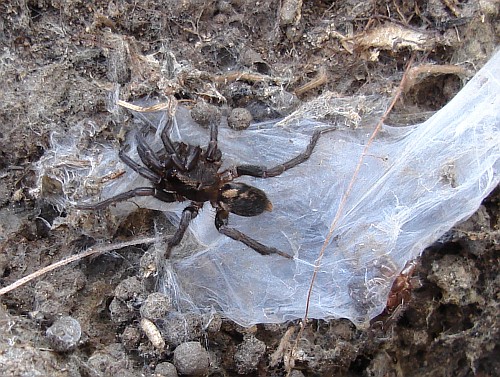
While I took the picture, I noticed something else: a part of the exuvia (cast-off skin) of a scorpion. I already had the feeling that today we would find Centruroides gracilis (Florida Bark Scorpion), a scorpion species that can easily be found in Veracruz and several other states of Mexico. The landscape in front of the pine forest looked right to me. And now we had proof, that scorpions were living here.
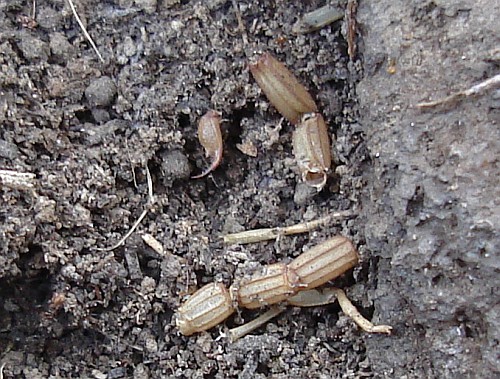
In the above photo you can clearly see the small bump under the actual stinger. This bump is called the subaculear tubercle (SAT), and Centruroides species do have this feature. And I was quite sure that this was the exuvia of a Centruroides gracilis. We continued our walk into the pine forest, and I kept looking under volcanic rocks for more clues of scorpions living here.

And I was lucky, since under a stone just a little into the forest I found another, a bit larger, exuvia. The scorpion was probably up side down, on the underside of the stone, when it got out of its old exoskeleton, because when I lifted the stone, I saw the underside of the exuvia. I moved the stone back into position and took a picture of the habitat.
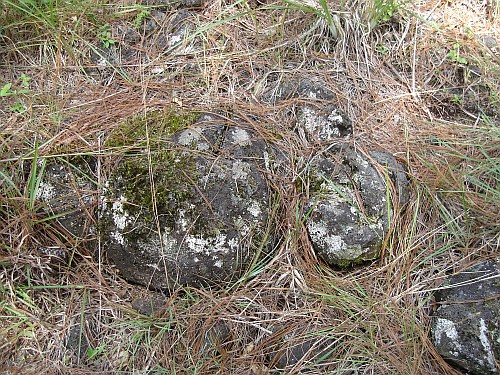
We continued our walk, deeper into the forest. I kept looking under stones, and in a bit more open spot I found another scorpion exuvia. No scorpions so far, but clear clues that they either enter the forest, or live in the forest. I had already decided to give the field in front of the forest we entered a closer look on our way back, because I wanted to have some pictures of living scorpions.

The exuvia was resting on top of the silk tunnel made by a spider, and again upside down. The SAT (subaculear tubercle) is clearly visible in the close-up below, and one can almost count the number of pectinal teeth of each "comb" forming the V shape at the underside of a scorpion, which can be used as an identification key and sometimes to sex the scorpion.
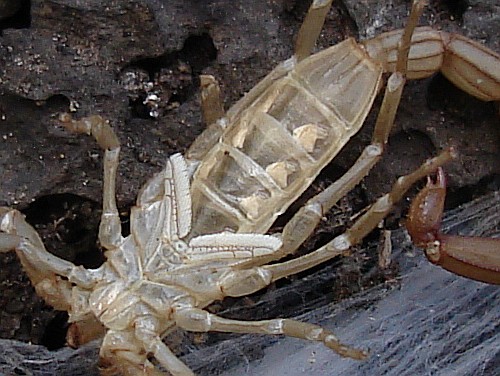
Read the next part of this blog entry in Orb weavers and grasshoppers.